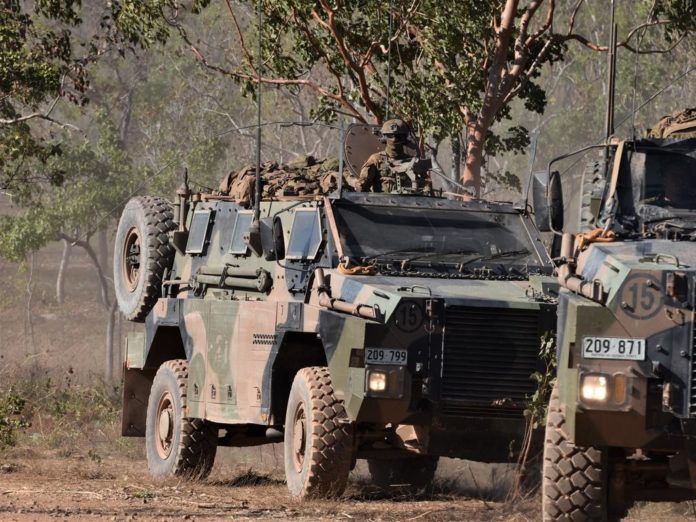Remember when we explained that AM can be a good production candidate for expeditionary manufacturing? Well, here is a great example of how expeditionary Metal 3D Printing can improve Defence readiness.
The Australian Army have proven it is possible to 3D print and replace armored vehicle parts in the field during Exercise Koolendong, an annual bilateral military exercise between the Australian Army and the Marine Rotational Force – Darwin. Various parts for the M113 Armored Personnel Carrier were replaced with metal parts manufactured on-site, using technology developed by an Australian company, SPEE3D. Parts were identified, 3D printed, certified and then subsequently installed on vehicles.
The Australian Army is rapidly developing their metal manufacturing capability with SPEE3D’s metal 3D printing technology. The company’s WarpSPEE3D Tactical Printer uses patented, cold-spray technology that enables fast and cost-effective metal part production. It can print large metal parts up to 40 kilograms at a record rate of 100 grams per minute.
SPEE3D has been working closely with the Australian Army and Royal Australian Navy to bring this capability to the Australian Defence Force with world-first field trials designed to test the feasibility of deploying metal 3D printing as a capability, both in barracks and in the field. A number of field trials in 2020 resulted in over 50 case studies of printable parts and demonstrated that SPEE3D’s WarpSPEE3D printer was robust enough to operate in remote, Australian bushland. The program was extended in 2021 to verify initial results.
In 2021, SPEE3D has been helping train the Australian Army’s first military Additive Manufacturing Cell (AMC) technicians who specialize in the production of metal 3D printed parts, from design, printing, machining, heat-treatment, through to certification. In the remote bushland of Bradshaw Training Area in the Northern Territory, the AMC and SPEE3D recently tested the WarpSPEE3D Tactical Printer as part of its toughest trial yet. The printer was transported in a round trip over 1200 kilometers, over rough terrain, to operate in hot and dusty conditions for three weeks.
During the trial, the AMC produced more than a dozen different replacement parts for the M113 Armored Personnel Carrier, a vehicle that has been used by the Australian Army for over 40 years. The trial aimed to prove metal 3D printing can produce high-quality, military-grade parts that can be validated and certified for use in the field. One of the parts produced was an M113 wheel bearing cover, a part which is often damaged by trees when driven through bushland. The two-kilogram wheel bearing cover was printed in just 29 minutes at a print cost of $100 USD. The team were able to 3D print, heat treat, machine, test and validate the parts in the field as well as redesign and fortify some parts, reducing the risk of future damage.
“Field trials conducted in 2020 proved SPEE3D technology was deployable. This year’s trial extension was bigger, longer, and more remote, making it the worlds’ toughest and longest metal 3D printing trial so far”, SPEE3D’s CEO, Byron Kennedy, commented.
Remember, you can post job opportunities in the AM Industry on 3D ADEPT Media free of charge or look for a job via our job board. Make sure to follow us on our social networks and subscribe to our weekly newsletter: Facebook, Twitter, LinkedIn & Instagram ! If you want to be featured in the next issue of our digital magazine or if you hear a story that needs to be heard, make sure you send it to contact@3dadept.com






